
Overview
The HVAC (Heating, Ventilation, and Air conditioning) Industry is designed to measure the humidity level in the air. They provide crucial data for controlling environmental conditions in various settings, including HVAC systems, laboratories, and industrial processes. By detecting moisture levels accurately, hygrometers help ensure optimal conditions for human comfort, preservation of materials, and efficient operations. They come in different types, such as psychrometers, capacitive hygrometers, and mechanical hygrometers, each offering specific advantages for different applications. Overall, hygrometers play a vital role in maintaining balanced and comfortable indoor environments while aiding in quality control across industries.
Depending on specific features and functions, GAO Tek’s hygrometers are sometimes referred to as humidity gauges, moisture meters, hygrographs, dewpoint indicators, relative humidity sensors, humidity detectors, vapor density meters, condensation monitors, air moisture analyzers, dampness sensors, wetness gauges, atmospheric humidity meters, and water vapor gauges.
Furthermore, GAO Tek’s hygrometers are further grouped into:
alarm-enabled, auto power-off, compact small-scale, data logging, dew point, high-precision, USB connectivity, indoor, industrial, multi-function, and wireless.
GAO Tek’s hygrometers have the following applications in the heating, ventilation, and air conditional industry:
- Monitoring Humidity Levels: GAO Tek’s hygrometers are essential tools in HVAC systems for accurately measuring and maintaining optimal humidity levels, ensuring occupant comfort, and preventing moisture-related issues such as mold growth and material degradation.
- HVAC System Calibration: GAO’s hygrometers are used for calibrating humidity sensors within HVAC equipment, ensuring precise and reliable operation of the system.
- Energy Efficiency Optimization: By providing accurate humidity readings, GAO’s hygrometers enable HVAC systems to adjust moisture levels efficiently, contributing to energy savings and reducing operational costs.
- Preventing Condensation: Hygrometers from GAO Tek help HVAC technicians identify areas prone to condensation buildup, allowing for targeted preventive measures to avoid damage to equipment and structures.
- Indoor Air Quality Management: GAO’s hygrometers play a crucial role in maintaining indoor air quality by ensuring proper humidity levels, which can impact comfort, health, and productivity.
- Mold Prevention: GAO Tek’s hygrometers assist in monitoring and controlling humidity levels to prevent mold growth within HVAC systems and indoor environments, safeguarding occupant health.
- Data Logging and Analysis: GAO’s hygrometers often feature data logging capabilities, enabling HVAC professionals to track humidity trends over time and analyze system performance for optimization.
- Building Automation Systems Integration: GAO Tek’s hygrometers can be integrated into building automation systems, allowing for automated control of HVAC equipment based on real-time humidity measurements.
- Compliance with Regulations: GAO’s hygrometers help HVAC systems meet regulatory requirements for indoor air quality and environmental conditions by ensuring humidity levels remain within specified limits.
- Maintenance Planning: By monitoring humidity levels, GAO’s hygrometers aid in predictive maintenance planning for HVAC systems, identifying potential issues before they escalate and minimizing downtime.
More information on hygrometers and their applications in other industries can be found
This category page lists related products
Systems in The HVAC Industry Utilizing Hygrometers
Here Are Some Popular Systems in The Heating, Ventilation, And Air Conditional Industry Using Hygrometers:
HVAC Control Systems:
- These systems integrate hygrometers along with temperature and pressure sensors to regulate heating, cooling, and ventilation processes. They ensure precise control over indoor climate conditions, enhancing comfort and energy efficiency.
Humidity Monitoring Systems:
- Dedicated systems equipped with hygrometers continuously monitor and display humidity levels in HVAC environments. They provide real-time data to HVAC technicians for proactive adjustments and maintenance.
Dehumidification Systems:
- Hygrometers are essential components in dehumidification systems, which remove excess moisture from the air to prevent issues such as mold growth and discomfort. These systems often include software for setting and adjusting humidity levels based on environmental conditions.
Humidification Systems:
- In environments where low humidity levels can cause discomfort or damage, humidification systems utilize hygrometers to maintain optimal moisture levels. The systems may incorporate software for controlling humidity output and scheduling operation times.
Energy Management Systems (EMS):
- EMSs leverage hygrometers and other sensors to optimize energy usage in HVAC systems. They analyze data on temperature, humidity, and occupancy to implement energy-saving strategies such as demand-based ventilation and setback schedules.
Building Automation Systems (BAS):
- BAS integrates hygrometers into centralized control systems for managing various building functions, including HVAC. These systems enable remote monitoring and control of humidity levels, allowing facility managers to maintain optimal conditions efficiently.
Environmental Monitoring Systems:
- These systems utilize hygrometers alongside other sensors to monitor indoor air quality parameters, including humidity, temperature, and air pollutants. They provide comprehensive insights into HVAC performance and indoor environmental conditions.
Data Logging Software:
- Hygrometer data can be logged and analyzed using specialized software, allowing HVAC technicians to track humidity trends over time. This software may offer features such as graphical visualization, data export, and alarm notifications for out-of-range conditions.
Integrated Building Management Systems (IBMS):
- IBMSs combines hygrometers with other building systems, such as lighting, security, and fire safety, for centralized management. They offer advanced functionality for optimizing HVAC performance and maintaining occupant comfort.
Predictive Maintenance Software:
- Some software solutions utilize hygrometer data for predictive maintenance of HVAC equipment. By analyzing humidity levels and trends, these systems can anticipate issues such as condensation buildup or malfunctioning humidifiers, allowing for proactive maintenance scheduling.
GAO Tek’s targeted markets are North America, particularly the U.S. and Canada.
Complying With Government Regulations
GAO Tek’s Hygrometers Comply or Help Our Customers Comply With U.S. Government Regulations Such as:
- ASHRAE Standard 62.1
- EPA Clean Air Act Regulations
- OSHA Indoor Air Quality Standards
- NIST Handbook of HVAC Systems and Equipment
- DOE Building Energy Codes and Standards
- NFPA Fire Codes for HVAC Systems
- ANSI/ASHRAE Standard 55
- NIOSH Criteria for a Recommended Standard
- ASME B31.1
- ICC International Mechanical Code (IMC)
GAO Tek’s Hygrometers Comply or Help Our Clients Comply With Canadian Regulations Such as:
- CSA B52: Mechanical Refrigeration Code
- CSA F280: Residential Ventilation Standard
- CSA B139: Installation Code
- CSA C273: Air Quality Management
- CSA C828: Performance Standard
- CSA C441: Energy Efficiency Testing and Rating
- CSA C448: Design and Installation of Commercial Kitchen Exhaust Systems
- CSA B149: Installation Code
- CSA B149.1: Natural Gas and Propane Installation Code
Case Studies of Hygrometers in The HVAC Industry
Hygrometers are sometimes called humidity gauges, moisture meters, hygrographs, dewpoint indicators, relative humidity sensors, humidity detectors, vapor density meters, condensation monitors, air moisture analyzers, dampness sensors, wetness gauges, atmospheric humidity meters, and water vapor gauges.
Here Are Some Practical Examples of Using Hygrometers in The Heating, Ventilation, And Air Conditional Industry:
Northeast Region of the U.S. in New York City, hygrometers were deployed in a commercial office building to optimize HVAC system performance, ensuring comfortable indoor conditions while reducing energy consumption.
A hospital in Boston, Massachusetts, utilized hygrometers to monitor humidity levels in critical care areas, contributing to infection control measures and patient comfort.
A manufacturing facility in Philadelphia, Pennsylvania, implemented hygrometer-based controls to regulate humidity in production areas, enhancing product quality and minimizing material degradation.
Midwest Region of the U.S. In Chicago, Illinois, a large-scale warehouse utilized hygrometers to manage moisture levels, preventing mold growth and preserving stored goods.
In Columbus, Ohio, integrated hygrometers into its HVAC systems to maintain optimal indoor air quality in classrooms and dormitories.
A food processing plant in Minneapolis, Minnesota, relied on hygrometers for precise humidity control during production, ensuring product consistency and safety.
South Region of the U.S. In Atlanta, Georgia, a data center employed hygrometers to monitor humidity levels and prevent equipment malfunction due to moisture damage.
In Miami, Florida, implemented hygrometer-based controls in guest rooms to maintain comfortable humidity levels, enhancing guest satisfaction.
An industrial facility in Houston, Texas, utilized hygrometers to regulate humidity in manufacturing areas, improving worker productivity and equipment reliability.
West Region of the U.S. In Los Angeles, California, a pharmaceutical laboratory used hygrometers to monitor humidity levels in cleanrooms, ensuring compliance with regulatory standards for product quality.
A winery in Napa Valley, California, integrated hygrometers into its HVAC systems to maintain optimal humidity levels in aging cellars, preserving wine quality.
In Seattle, Washington, relied on hygrometers for humidity control in server rooms, safeguarding equipment from moisture-related damage.
Canada in Toronto, Ontario, a commercial office building implemented hygrometer-based controls to optimize humidity levels and energy efficiency in HVAC systems.
A healthcare facility in Vancouver, British Columbia, utilized hygrometers to maintain hygienic conditions and patient comfort in surgical suites and patient rooms.
A manufacturing plant in Montreal, Quebec, relied on hygrometers for precise humidity control in production areas, ensuring product quality and equipment reliability.
GAO RFID Inc. RFID Hardware, a company of GAO Tek Inc., is ranked as a top 10 RFID suppliers in the world. Its RFID, BLE, and IoT products have also been widely used in the heating, ventilation, and air conditioning industry. Articles about related industries are given below:
Use of Hygrometers With Leading Software And Cloud Services in The HVAC Industry
GAO Tek has used or has facilitated its customers to use GAO’s hygrometers with some of the leading software and cloud services in their applications. Examples of such leading software and cloud services include:
- EnergyGauge USA
- Elite Software RHVAC
- BuildingIQ
- Trane TRACE 700
- Wrightsoft Right-Suite Universal
- Design Master HVAC
- Hevacomp
- Building Robotics
- KGS Buildings
- Aquicore
- Lucid BuildingOS
- BldgMetrics
- Building Robotics
GAO Tek’s hygrometers and their applications in other industries are listed on
Other related products can be found on this category page
Meeting Customers’ Demands
Large Choice of Products
In order to satisfy the diversified needs of their corporate customers, GAO Tek Inc. and its sister company GAO RFID Inc. together offer a wide choice of testing and measurement devices, network products, RFID, BLE, IoT, and drones.
Fast Delivery
To shorten the delivery to our customers, GAO has maintained a large stock of its products and can ship overnight within the continental U.S. and Canada from the nearest warehouse.
Local to Our Customers
We are located in both the U.S. and Canada. We travel to customers’ premises if necessary. Hence, we provide very strong local support to our customers in North America, particularly the U.S. and Canada.
Furthermore, we have built partnerships with some integrators, consulting firms, and other service providers in different cities to further strengthen our services. Here are some of the service providers in the heating, ventilation, and air conditional industry we have worked with to serve our joint customers:
- Johnson Controls
- Siemens
- Honeywell
- Schneider Electric
- Trane Technologies
- Carrier Corporation
- IBM Global Services
- Accenture
- Deloitte
- PricewaterhouseCoopers (PwC)
- CGI Group
- WSP Global
- SNC-Lavalin
- Stantec
- Tetra Tech
GAO has Many Customers in The HVAC Industry
The products from both GAO Tek Inc. and GAO RFID Inc. have been widely used in the heating, ventilation, and air conditioning industry by many customers, including some leading companies. Here is more information on applications of GAO RFID Inc.’s products in the heating, ventilation, and air conditioning industry. Articles about related industries are given below:
Here are some of GAO’s customers in the heating, ventilation, and air conditional industry:
- Johnson Controls
- Siemens
- Honeywell
- Schneider Electric
- Trane Technologies
- Carrier Corporation
- Daikin Industries
- Lennox International
- Mitsubishi Electric
- Rheem Manufacturing Company
- York International
- LG Electronics
- Fujitsu General
- Nortek Global HVAC
- Gree Electric Appliances
- Goodman Manufacturing
- Haier Group Corporation
- Danfoss Group
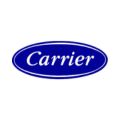


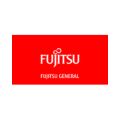
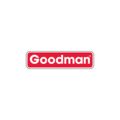
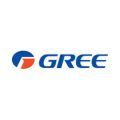
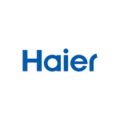

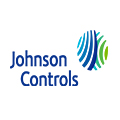



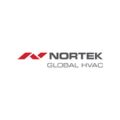
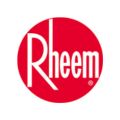
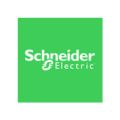



Contact Us
Here are GAO Tek’s hygrometers and they are further organized by feature:
alarm-enabled, auto power-off, compact small-scale, data logging, dew point, high-precision, USB connectivity, indoor, industrial, multi-function, and wireless.
If you have any questions about our products or want to place an order, our technical experts can help you.
Please fill out this form or email us.
